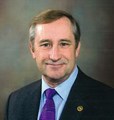FLASHBACK TO 2010: Partnership for Water Sustainability in British Columbia was incorporated as a society to create a lasting legacy for the Water Sustainability Action Plan

“The Partnership will continue to evolve and deliver program elements developed under the umbrella of the Water Sustainability Action Plan for British Columbia,” stated Tim Pringle. “The Partnership vision is that water sustainability will be achieved through implementation of green infrastructure policies and practices. How communities in BC get there relies on a change in mind-set. The Partnership mission is to facilitate that change.”









